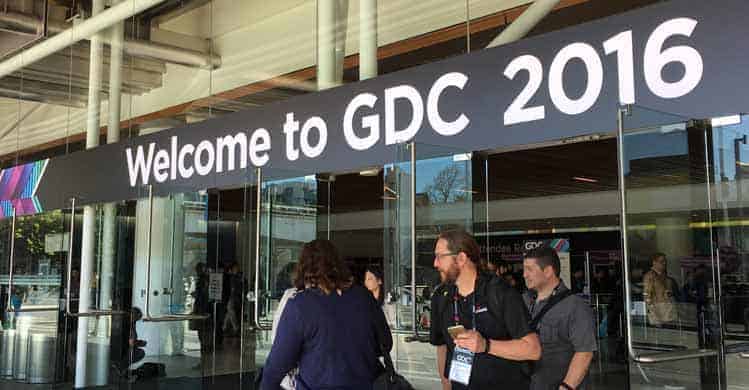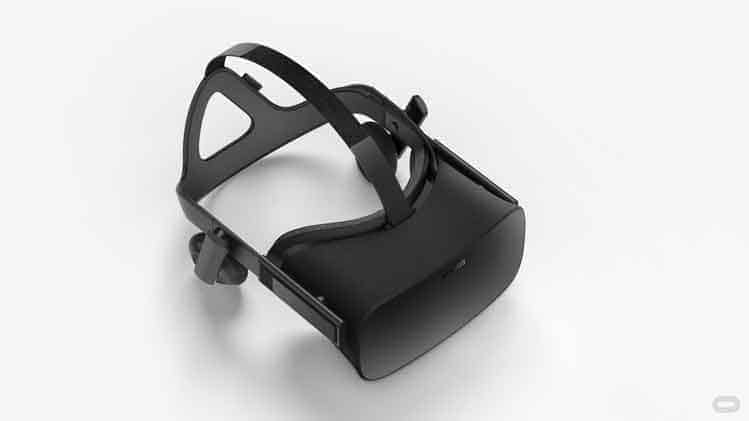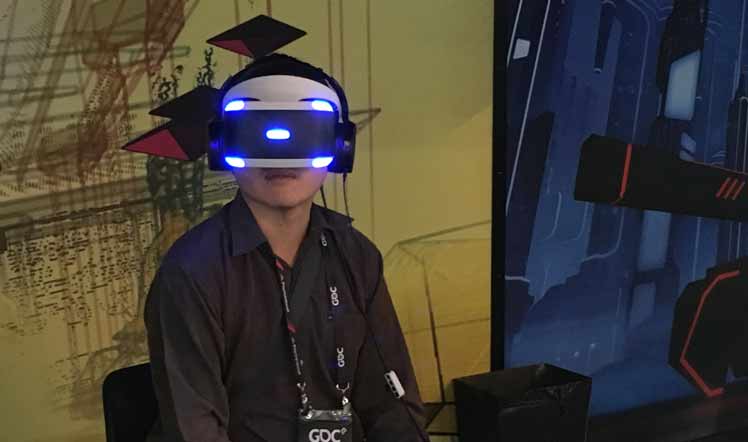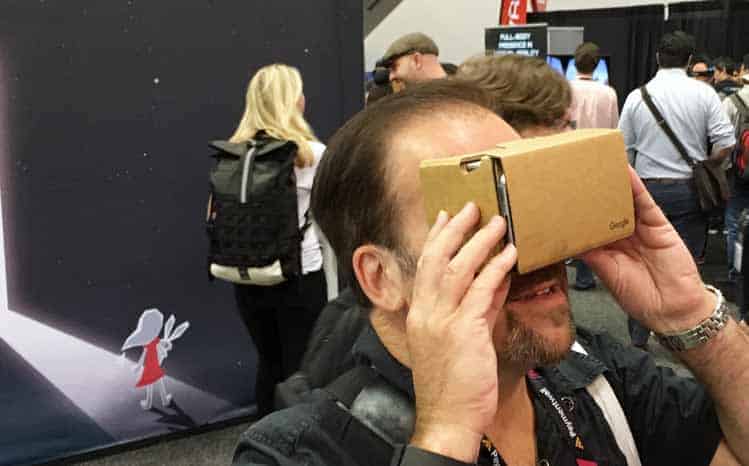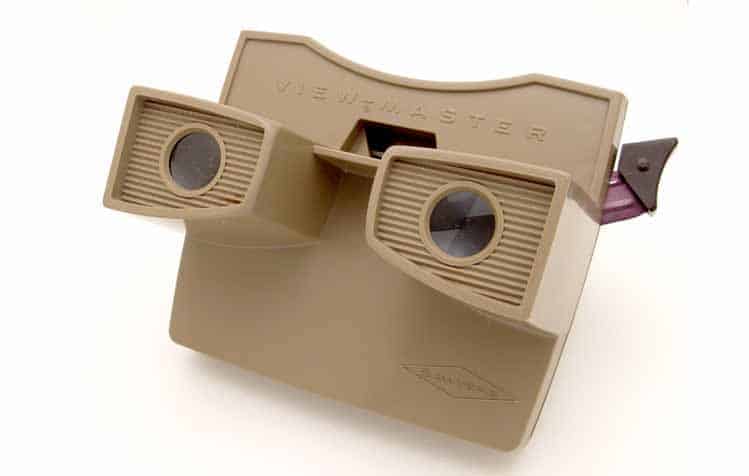With the 2016 Games Developer Conference #GDAC16 now behind us, I review one of the hottest trends that was at the show – virtual reality or VR.
I was somewhat skeptical of virtual reality and whether it would deliver the experience promised. What I wanted to see was application of VR for social media.
Although I was at a games show, I put on my first lightweight, albeit geeky looking, headset and I was instantly mesmerized by the enrichment and out-of-this world, sensory experience.
You simply cannot read this blog or understand VR until you wear it. Seeing a 3D world from the 2D of television or screens just doesn’t do it justice.
I saw a plethora of new technologies and Virtual Reality (VR) from the major players such as Oculus Rift, the Sony Playstation, called PS4VR and Google Cardboard stole the show.
The tech interest in VR had everyone ‘oohing and aahing’ even though some products are still not available. To get your hands on a test device required you to line up with 30 to 50 people ahead of you.
Oculus was the most polished product of all the VR devices. Early adopter iterations from earlier GDC conferences have now produced a market ready product that is smooth, sleek and surprisingly comfortable to wear.
Like all the VR sets, the Oculus looks like you’re wearing a scuba diving mask. It was surprisingly easy to adjust and get a comfortable fit.
My son Joshua (tech nerd in the making) easily and intuitively fitted it and was ready for action playing a game called “the Climb”.
The resolution of the Oculus was very acceptable for a VR product. Improved screen resolution will only increase the experience.
The main issue however, will be PC performance. Oculus already have Oculus ready machines – no doubt with impressive speeds and graphics cards to process the many titles from the Oculus store being released March, 2016.
To try out the Tron looking, Sony VR was by appointment only and you had to download an app, register and then book and stand in yet another queue.
PlayStation VR costs US$399 and is slated to arrive in October 2016. You will need to utilize your existing Sony PS4 and the VR is an add-on that gives you the headset, connector hardware and cables.
The motion-tracking Move Controllers and PlayStation Camera don’t come bundled so expect to pay more for those.
The unit has a breakout box that allows other viewers to see onscreen what the VR user is seeing.
The style of the PSVR is impressive with bluish LED headset that would look interesting with multiple players bobbing their heads from left to right.
I was wondering how an existing PS4 would support increased graphics and processing speeds for the main console.
However, shortly after the show Patrick Klepek from Kataku hinted that Sony is working on a Playstation 4.5 which would have boosted graphics hardware which means video will look crisper and remove any screen flicker that might occur.
How much, or even, if true is unknown. Sony spokesperson said “We can’t comment on rumors or speculation.” However, Sony promises that the PSVR will come with up to 50 games at launch.
At the other end of the spectrum is Google Cardboard. Yes, that’s right, a US$15, single ply cardboard that allows you to insert your Android or iPhone at one end and look through a binocular lens system and view your phone screen. You can even build one yourself.
Google Cardboard reminded me of a View-Master from the 1970’s which had plastic wheels with film and you could view only 7 images with the click of a lever!
The Cardboard exhibitors had a brilliant demo reel running on an Android phone which was very impressive and I estimate the production and post-production of the 90 second demo would have cost in excess of US$75,000 and used a specially constructed 16 Go-Pro camera rig.
Google Cardboard app on Android and iOS
Whilst GDC16 was aimed at the gaming developer market there are commercial opportunities for marketers and advertisers and, in time, social media.
The VR industry revenues in 2014 were a mere US$90 million, is expected to be a US$5.2 billion market with a projected user base of 171 million users by 2018 and Goldman Sachs industry analyst Heather Bellini estimated that the VR industry could reach $80 billion by 2025.
VR advertising early adopter American Express used the 2015 US Open with Maria Sharapova which allowed US Open ticket holders to ‘return a serve’ in a virtual environment.
For retailers, auto manufacturers, architectural, travel and tourism all lend themselves to immersive, virtual experiences.
I also see changes to newsgathering and documentary film-makers as another avenue of exploration aside from the gaming and entertainment industry.
The industry is not without its challenges. It is still early days with technical hurdles to overcome. Price sensitivity, technical performance and; the biggest – content creation will all be the challenges to market and adoption. Notwithstanding, as vendors carve out their niche the market and opportunities, show a clear road ahead.
